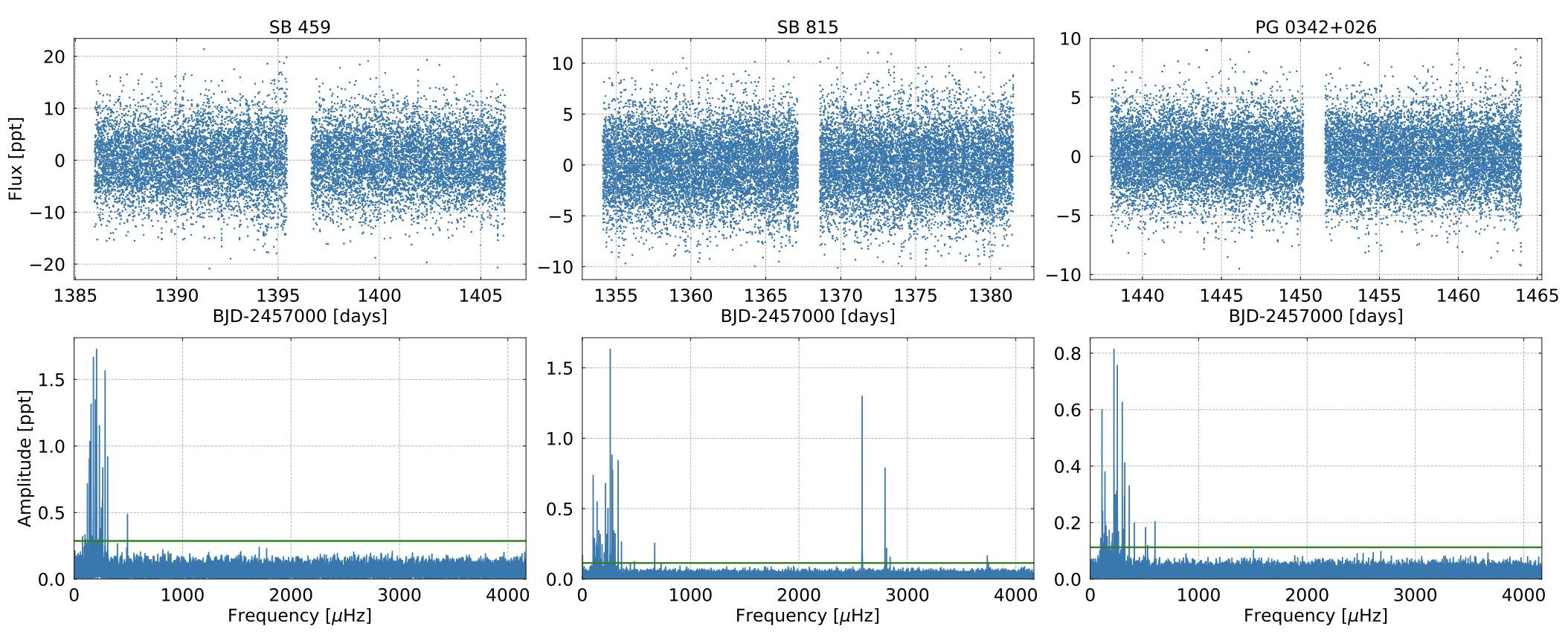STATUS UPDATE: Reprocessed TESS Data is Coming Soon! - reprocessed data for Sectors 1-19 will be ingested into the MAST archive over the next few months. See the MAST News page for more details.
Hello TESS followers and welcome to this weeks news bulletin! This week we have three papers from the archive.
Photometric detection of internal gravity waves in upper main-sequence stars. II. Combined TESS photometry and high-resolution spectroscopy (Bowman et al., 2020):
This paper combines high precision TESS light curves with high resolution ground based spectroscopy for 70 O and B stars to test the relationship between photometric signatures and internal gravity waves parameters.
Internal gravity waves are thought to occur in massive stars via turbulent core convection and from turbulent pressure fluctuations in surface layers.
The authors determine that there is a relationship between the location of a star on the spectroscopic Hertzsprung-Russell diagram and the amplitudes and frequencies of its random light curve variability. The macroturbulent velocity broadening in the spectral lines of these stars are also correlated to the properties of the stochastic variability.
Mode identification in three pulsating hot subdwarfs observed with TESS satellite (Sahoo et al 2020): Within this paper three pulsating subdwarf B (sdB) stars are examined using TESS data, TIC 067584818, TIC 169285097, and TIC 457168745. In each star a few tens of frequencies/ oscillations are detected. No multiplets were detected in this work. Using high precision trigonometric parallaxes from Gaia and spectral energy distributions the atmospheric parameters were converted into stellar ones. The Radii, masses and luminosities for these three stars are typical for extreme horizontal branch stars (mass ~0.47Msun).
The GALAH survey: Lithium-rich giant stars require multiple formation channels (Martell 2020): In this paper data from GALA, K2-HERMES and TESS-HERMES are used to instigate the properties of 1306 red giant stars with high photospheric abundances of Lithium (Li). The paper aims to understand proposed mechanisms for lithium enrichment in giant stars. The authors confirm that Li giant stars are rare and make up only 1.1% of the sample examined. Further analysis revealed that red clump stars are three times more likely to be Li-rich as red giant branch stars, and that the occurrence rate of Li richness with metallicity is different between the two populations. The likelihood of a rapidly rotating giant being Li rich is higher than a non rapid rotator, independent of its evolutionary state. Stars on the red clump which rapidly rotate have extreme levels of Li enrichment, where as no stars on the secondary red clump have Li abundances above the primordial level. The authors work indicates that there is a mass dependence in the Li enrichment mechanism. The complex distribution of Li indicated in this paper suggests that there are multiple independent mechanisms for Li production.

Fig 1: Taken from Sahoo et al., (2020). Upper panel presents the TESS light curves, nottom panel the amplitude spectra. Green horizonal line is the 4.5 sigma threshold.